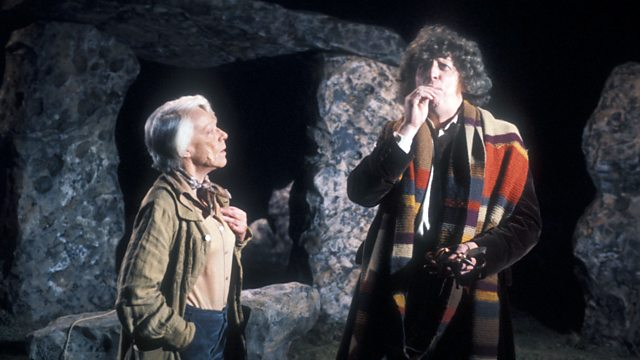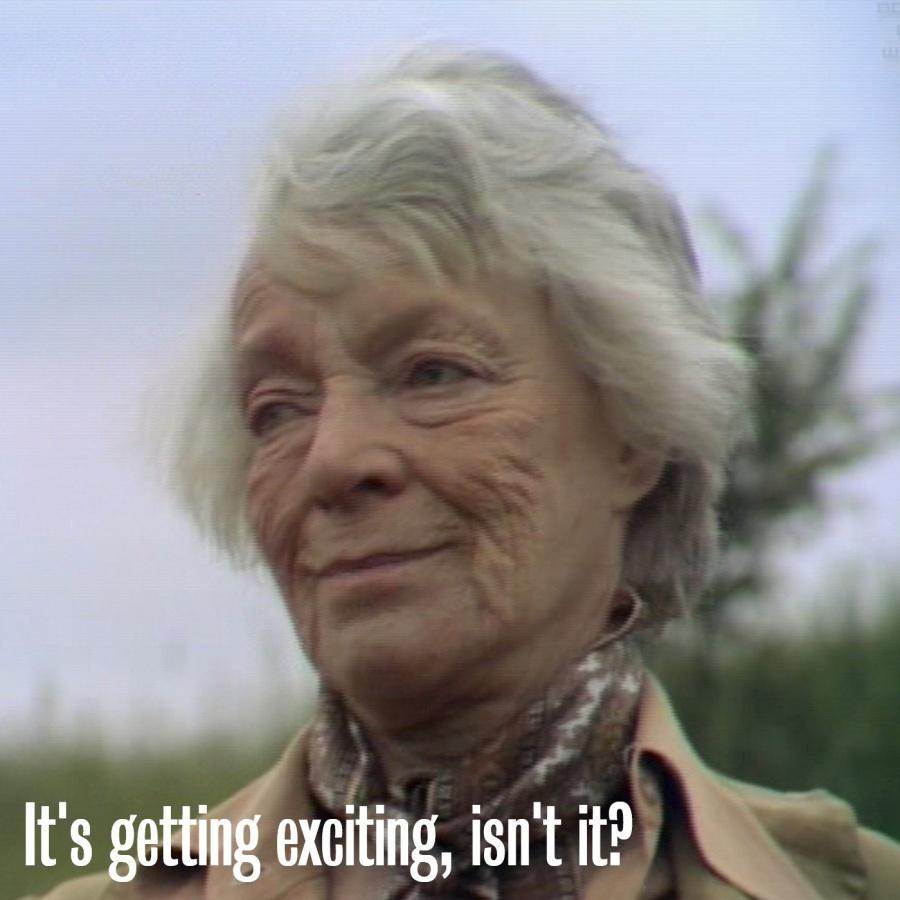Welcome back to Pledge Break, the podcast where two old friends talk about the Doctor Who version of history and the history of Doctor Who! In this episode, we’re exploring the prehistory of the British landscape, which includes waaaaaay more robot judges than you’d expect. That’s right, it’s classic Fourth Doctor story The Stones of Blood!

As always, you can go to our libsyn page here or just download the episode directly here.
In this episode, we also talk about the upcoming showing of Beyond the Gates at Fright Fest in London. More info here!


I have a lot of thoughts on this one (*loved* the discussion, since it’s all in my wheelhouse), so I will try to break them up a bit for relative coherence. Being unable to count the number of stones in the monument is a pretty common theme in megalith folklore; the Rollright Stones do have that as one of ‘their’ stories, but it’s repeated up and down the country about other circles; in some cases, if you do count the number of stones correctly, you’ll die, or otherwise have some negative outcome.
And as far as restoration goes, it’s certainly true that we don’t, as such, ‘do’ that now, but it was common until comparatively recently – Stonehenge and Avebury both had substantial ‘work’ done in the 1930s, and again in the 1950s. Alexander Keiller was the main force behind it, and while some of it was what we might consider scientific today, much of it was (James, as you mentioned) aiming for a particular moment frozen in time, rather than considering the larger history of the landscape.
Here’s a bit about that, and there are some good photos and even video showing the work: http://www.telegraph.co.uk/news/uknews/1370875/The-man-who-made-Aveburys-stone-circle.html
LikeLike
And…on to more!
The mentions of Gog and Magog are of particular interest, given the time this serial was written, since the ‘work’ of noted-then-bonkers archaeologist T.C. Lethbridge was very much part of the ‘mystical’ zeitgeist of the time. While he had been a reasonably well-respected researcher earlier in his career, he later championed the more out-there ideas of Margaret Murray (who in some ways followed a similar career path, albeit with more credibility, and I have always assumed the character of Dr. Rumford is based on her), but then went even more around the bend, esoterically-speaking.
His Gogmagog – The Buried Gods is essential reading in archaeological wish-fulfillment. It was panned by academics in the late 1950s, but caught on with hippies and folklorists in the 60s and 70s (and even later with people like Julian Cope). His sticking-metal-rods-in-the-ground technique let him ‘discover’ figures on the Gogmagog Hills – the pictures are amazeballs.
http://antiquity.ac.uk/projgall/meadows343
But his work would have likely been known to the production team – any of them who were keen readers of Janet & Colin Bord would have come across him.
LikeLike
I (James) know Lethbridge’s work a little — I read some of his earlier stuff on an Anglo-Saxon cemetery — but although I know of his later esoteric phase I have never actually read any of it!
LikeLiked by 1 person
OK, last bit for now, I promise!
Finally, consider when this aired in relation to the excellent Children of the Stones on ITV (filmed in and around Avebury, and drawing on many of the same mythological and folkloric elements; I’m sure there were some ) – it was on around Halloween in 1977, and it’s great – sort of like The Prisoner with stone circles, but aimed at a younger audience (maybe), with a pre-Blake’s 7 Gareth Thomas. I think it’s on YouTube now, and I highly recommend giving it a watch.
Finally/finally, here is a great modern song about people being turned into stone circles – inspired by The Hurlers, which is actually a monument in Cornwall:
LikeLike